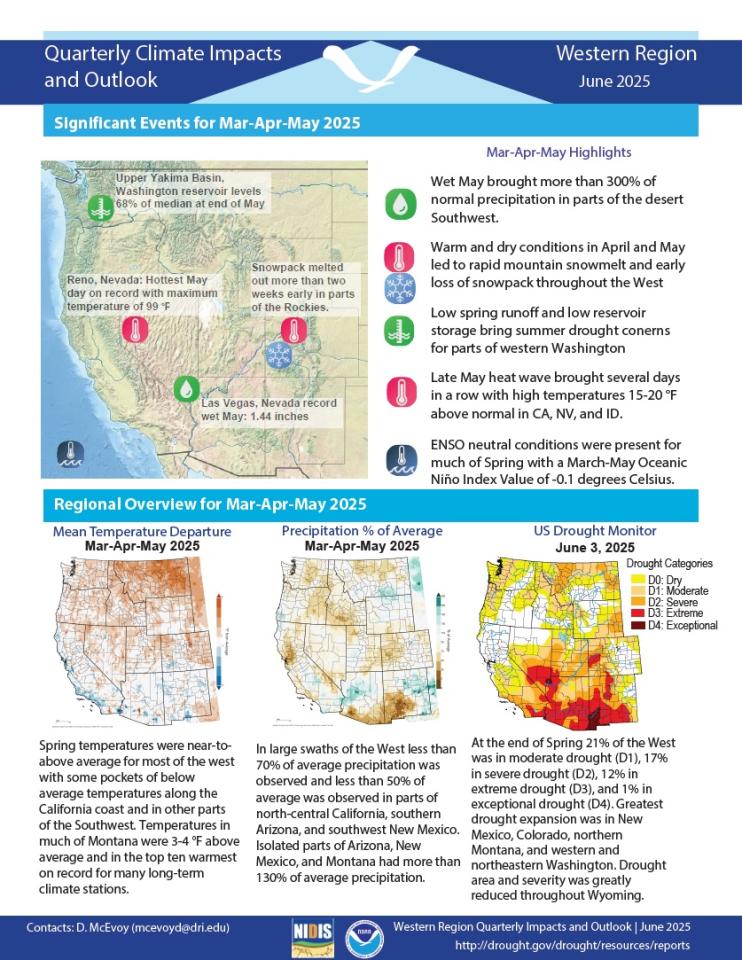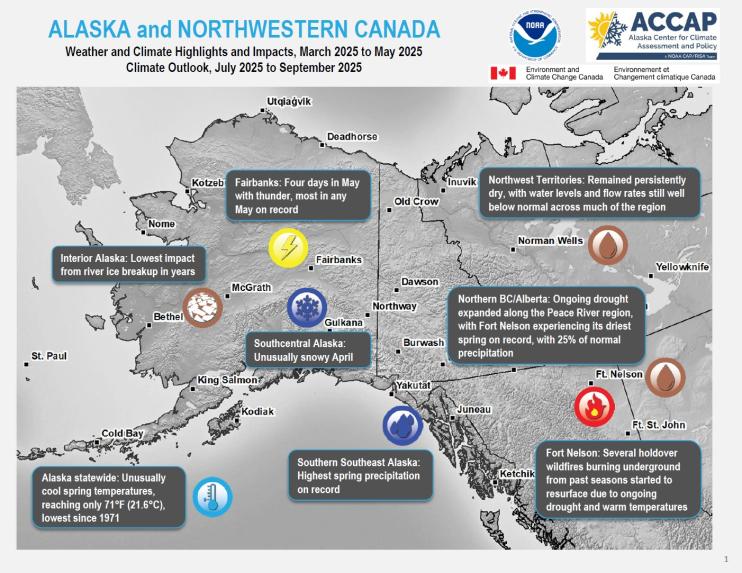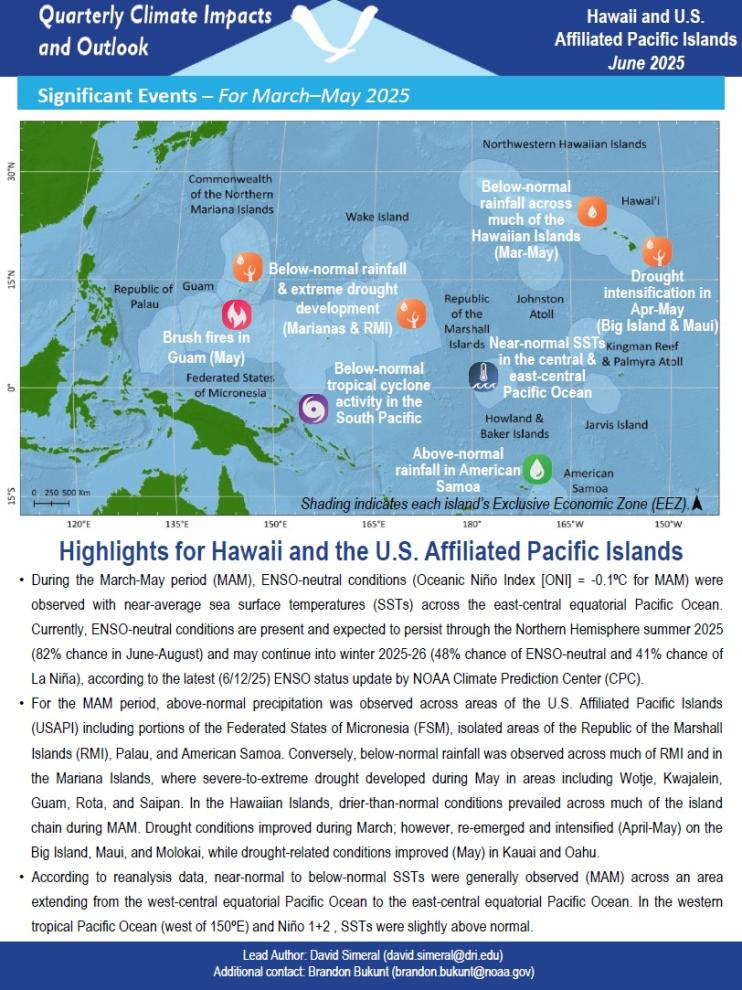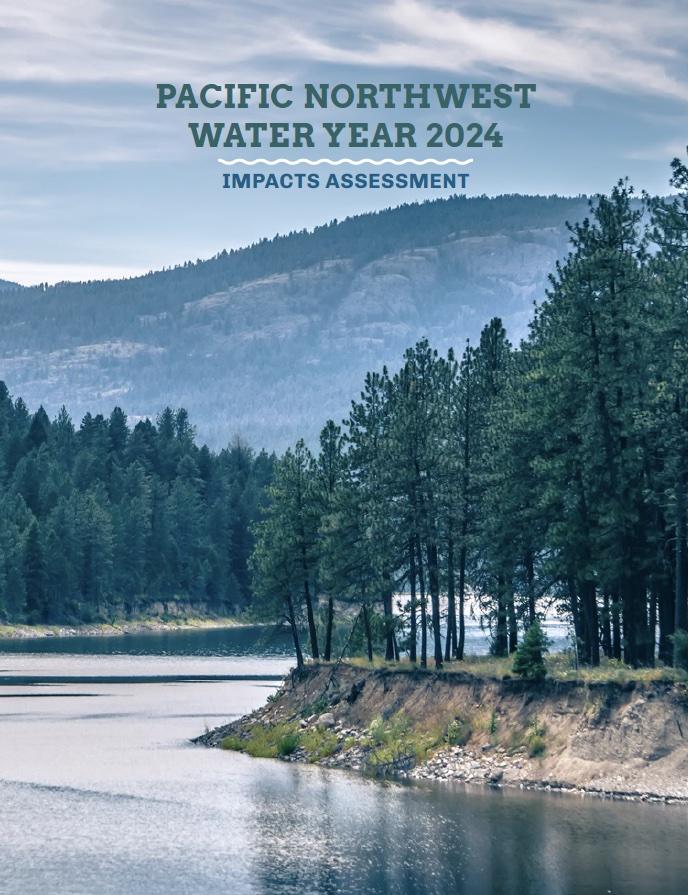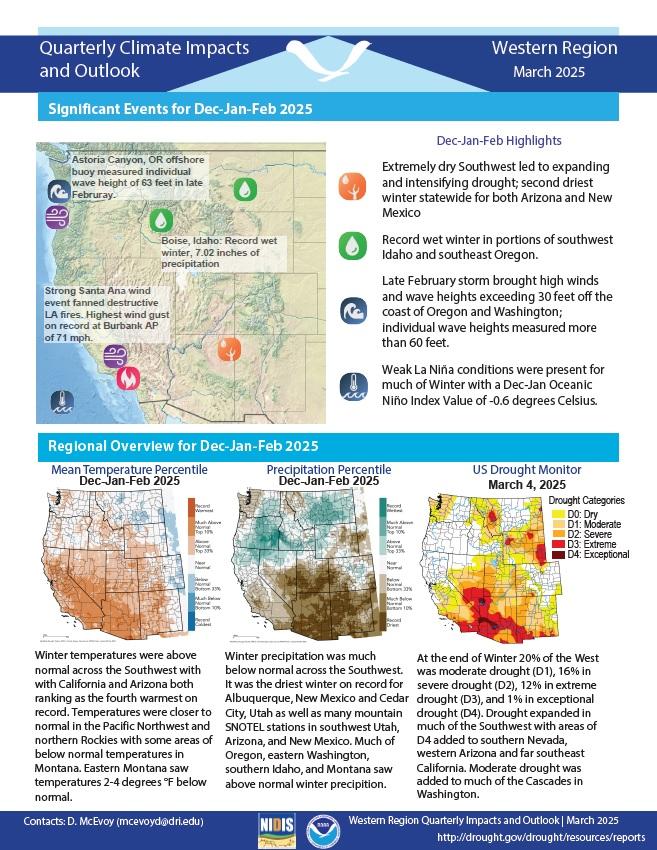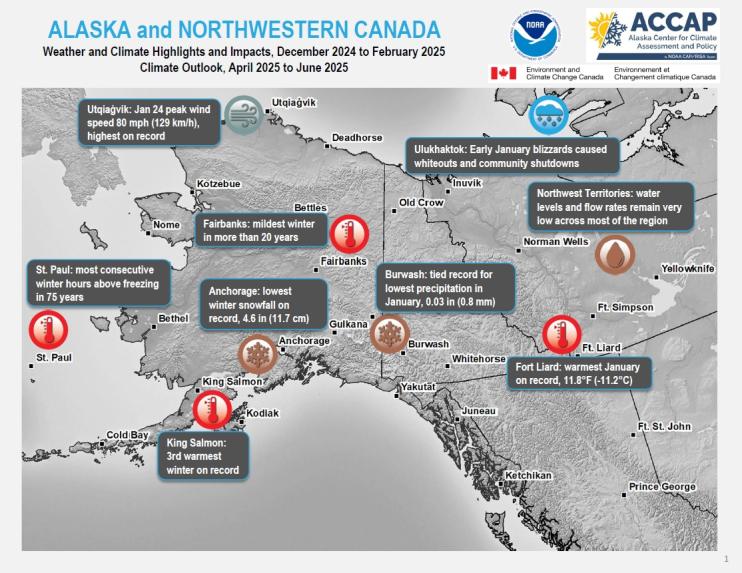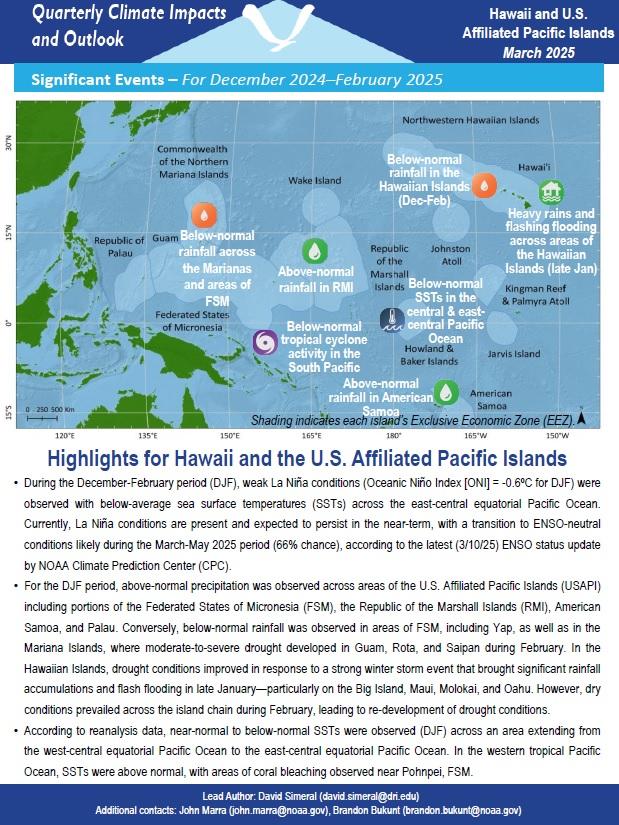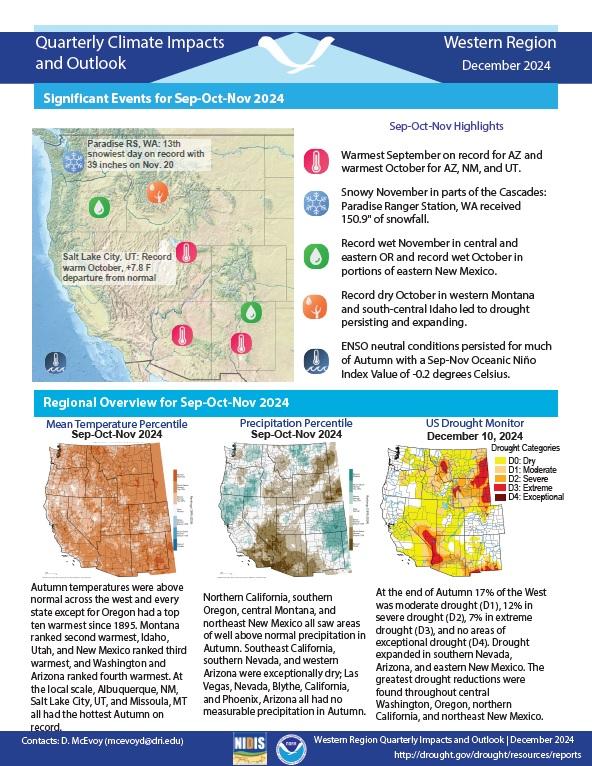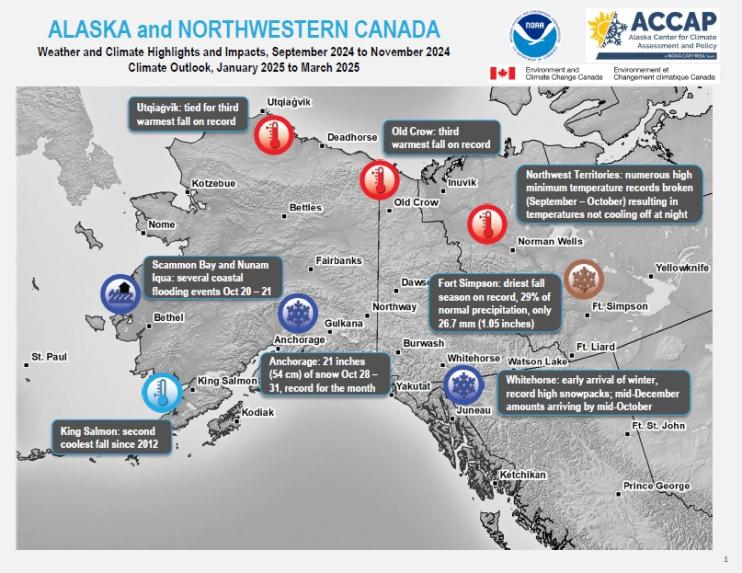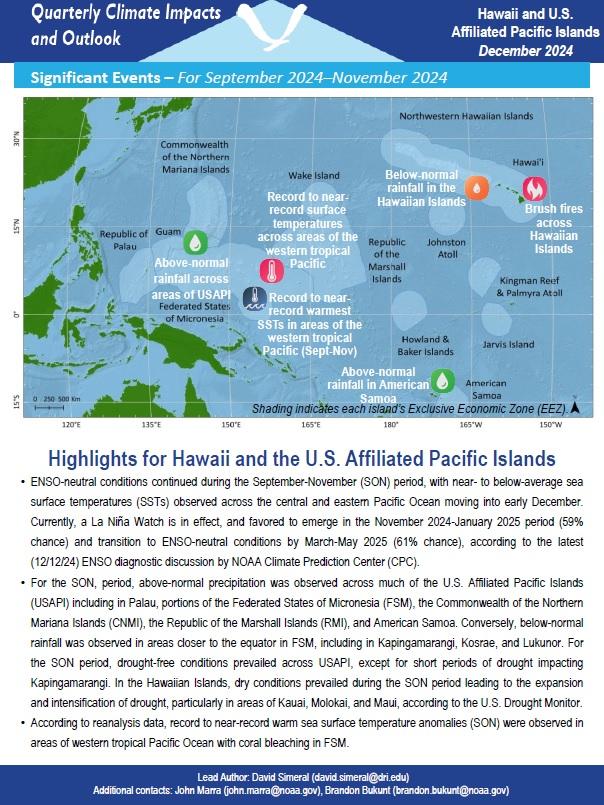Quarterly Climate Impacts and Outlook for the Western Region for March–May 2025. Dated June 2025.
Spring temperatures were near to above average for most of the West, with some pockets of below-average temperatures along the California coast and in other parts of the Southwest. In large swaths of the West, less than 70% of average precipitation was observed. Less than 50% of average precipitation was observed in parts of north-central California, southern Arizona, and southwest New Mexico.
Quarterly Climate Impacts and Outlook for Alaska and Northwestern Canada for March–May 2025, with an outlook for July–September 2025. Dated June 2025.
ECCC, NOAA, and partners created these outlooks to inform the public about recent impacts within their respective regions. Each regional report contains easy-to-understand language, and anyone can access them through the U.S. Drought Portal.
Quarterly Climate Impacts and Outlook for the Pacific Region for March–May 2025. Dated June 2025.
For the March-May period, above-normal precipitation was observed across areas of the U.S. Affiliated Pacific Islands (USAPI) including portions of the Federated States of Micronesia (FSM), isolated areas of the Republic of the Marshall Islands (RMI), Palau, and American Samoa. Conversely, below-normal rainfall was observed across much of RMI and in the Mariana Islands. In the Hawaiian Islands, drier-than-normal conditions prevailed across much of the island chain.
The purpose of the Pacific Northwest Water Year 2024 Impacts Assessment is to connect the water year conditions to sector-specific impacts to inform planning, response actions, and technical and scientific information needs. Ultimately, the assessment can be used as a resource for future management of drought and other climate extremes.
Quarterly Climate Impacts and Outlook for the Western Region for December 2024–February 2025. Dated March 2025.
Winter temperatures were above normal across the Southwest with California and Arizona both ranking as the fourth warmest on record. Temperatures were closer to normal in the Pacific Northwest and northern Rockies with some areas of below-normal temperatures in Montana. Winter precipitation was much below normal across the Southwest. Much of Oregon, eastern Washington, southern Idaho, and Montana saw above-normal winter precipitation.
Quarterly Climate Impacts and Outlook for Alaska and Northwestern Canada for December 2024–February 2025, with an outlook for April–June 2025. Dated March 2025.
ECCC, NOAA, and partners created these outlooks to inform the public about recent impacts within their respective regions. Each regional report contains easy-to-understand language, and anyone can access them through the U.S. Drought Portal.
Quarterly Climate Impacts and Outlook for the Pacific Region for December 2024–February 2025. Dated March 2025.
Quarterly Climate Impacts and Outlook for the Western Region for September–November 2024. Dated December 2024.
Autumn temperatures were above normal across the West, and every state except for Oregon had a top ten warmest autumn since 1895. Northern California, southern Oregon, central Montana, and northeast New Mexico all saw areas of well-above-normal precipitation in autumn. Southeast California, southern Nevada, and western Arizona were exceptionally dry.
Quarterly Climate Impacts and Outlook for Alaska and Northwestern Canada for September–November 2024, with an outlook for January–March 2025. Dated December 2024.
Environment and Climate Change Canada, NOAA, and partners created these climate outlooks to inform the public about recent climate impacts within their respective regions. Each regional report contains easy-to-understand language, and anyone can access them through the U.S. Drought Portal.
Quarterly Climate Impacts and Outlook for the Pacific Region for September–November 2024. Dated December 2024.
In September–November, above-normal precipitation was observed across much of the U.S.-Affiliated Pacific Islands (USAPI), including in Palau, portions of the Federated States of Micronesia (FSM), the Commonwealth of the Northern Mariana Islands, the Republic of the Marshall Islands, and American Samoa. Conversely, below-normal rainfall was observed in areas closer to the equator in FSM, including in Kapingamarangi, Kosrae, and Lukunor.


